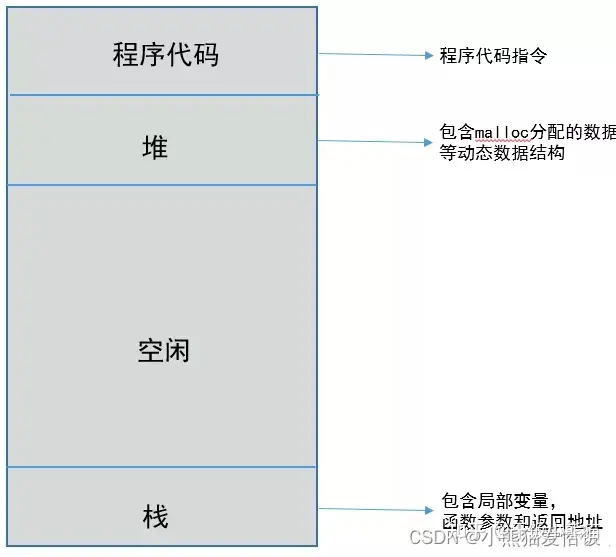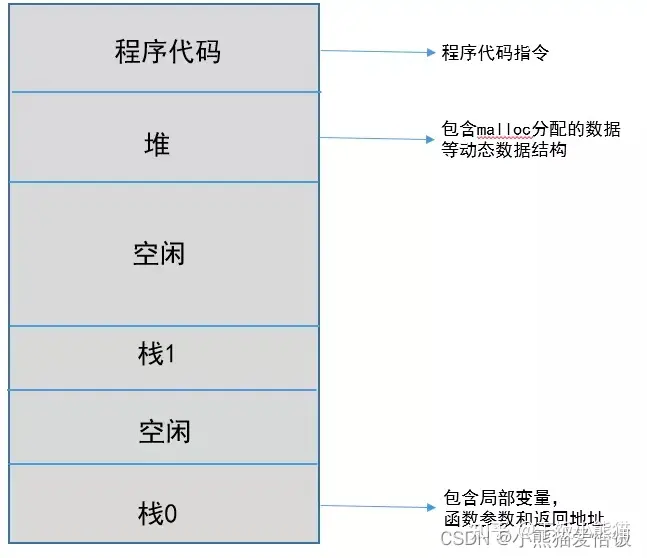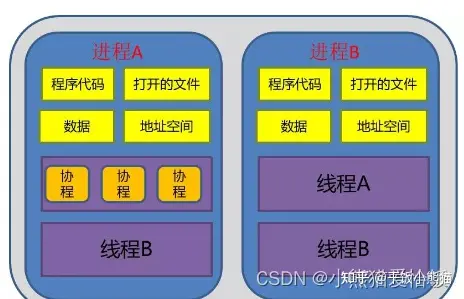python并发编程
python 多线程因为存在GIL锁,而基本上没有用,基本上只能用于较多 IO 的情况,然后CPU只运行一个线程。
常用的方式是使用多进程:
多进程
多进程模块
主要是multiprocessing包,来实现(因为太依赖操作系统底层了)。操作的方式和threading.Thread 差不多。不同的是,多线程可以共享进程内的资源和对象。而多进程需要通过进程间通信的方式传递 共同处理的资源和对象。
多进程实现方法
实现方法和多线程类似,使用multiprocessing.Process创建进程对象,然后这些进程对象包含start(), run(), join()方法,其中有一个方法不同Thread线程对象中的守护线程方法是setDeamon,而Process进程对象的守护进程是通过设置daemon属性来完成的。
主要包含两种方式。
- 通过
Process(fun, args)初始化, - 通过集成
Process类然后重写run()方法
示例
1
2
3
4
5
6
7
8
9
10
11
12
13
14
15
16
17
18
19
20
21
22
23
from multiprocessing import Process
# 方法1
def fun1(name):
print('测试%s多进程' %name)
p = Process(target=fun1,args=('Python',)) #实例化进程对象
p.start()
# 方法2
class MyProcess(Process): #继承Process类
def __init__(self,name):
super(MyProcess,self).__init__()
self.name = name
def run(self):
print('测试%s多进程' % self.name)
p = MyProcess('Python') #实例化进程对象
p.start()
Process类介绍
1
2
3
4
5
6
7
8
9
10
11
12
13
14
15
16
17
18
19
20
21
构造方法:
Process([group [, target [, name [, args [, kwargs]]]]])
group: 线程组
target: 要执行的方法
name: 进程名
args/kwargs: 要传入方法的参数
实例方法:
is_alive():返回进程是否在运行,bool类型。
join([timeout]):阻塞当前上下文环境的进程程,直到调用此方法的进程终止或到达指定的timeout(可选参数)。
start():进程准备就绪,等待CPU调度
run():strat()调用run方法,如果实例进程时未制定传入target,这star执行t默认run()方法。
terminate():不管任务是否完成,立即停止工作进程
属性:
daemon:和线程的setDeamon功能一样
name:进程名字
pid:进程号
多线程通信
进程是系统独立调度核分配系统资源(CPU、内存)的基本单位,进程之间是相互独立的,每启动一个新的进程相当于把数据进行了一次克隆,不同进程之间的数据互相不共享。
进程对列Queue
Queue是线程安全的,可以作为数据管道。
1
2
3
4
5
6
7
8
9
10
11
12
13
14
15
16
17
18
19
20
21
22
23
24
25
26
from multiprocessing import Process,Queue
def fun1(q,i):
print('子进程%s 开始put数据' %i)
q.put('我是%s 通过Queue通信' %i)
if __name__ == '__main__':
q = Queue()
process_list = []
for i in range(3):
p = Process(target=fun1,args=(q,i,)) #注意args里面要把q对象传给我们要执行的方法,这样子进程才能和主进程用Queue来通信
p.start()
process_list.append(p)
for i in process_list:
p.join() # 当前线程阻塞,直到p进程结束唤醒
print('主进程获取Queue数据')
print(q.get())
print(q.get())
print(q.get())
print('结束测试')
管道Pipe
1
2
3
4
5
6
7
8
9
10
11
12
13
14
15
16
17
18
19
20
from multiprocessing import Process, Pipe
def fun1(conn):
print('子进程发送消息:')
conn.send('你好主进程')
mess = conn.recv()
print(f'子进程接受消息:{mess}')
conn.close()
if __name__ == '__main__':
conn1, conn2 = Pipe() #关键点,pipe实例化生成一个双向管
p = Process(target=fun1, args=(conn2,)) #conn2传给子进程
p.start()
mess = conn1.recv()
print(f'主进程接受消息:{mess}')
print('主进程发送消息:')
conn1.send("你好子进程")
p.join()
print('结束测试')
Messager
Queue和Pipe只是实现了数据交互,并没实现数据共享,即一个进程去更改另一个进程的数据。那么久要用到Managers
1
2
3
4
5
6
7
8
9
10
11
12
13
14
15
16
17
18
19
20
21
22
23
24
25
26
from multiprocessing import Process, Manager
def fun1(dic,lis,index):
dic[index] = 'a'
dic['2'] = 'b'
lis.append(index) #[0,1,2,3,4,0,1,2,3,4,5,6,7,8,9]
#print(l)
if __name__ == '__main__':
with Manager() as manager: # s上下文管理器,让下文的类别实现线程安全
dic = manager.dict() #注意字典的声明方式,不能直接通过{}来定义
l = manager.list(range(5)) #[0,1,2,3,4]
process_list = []
for i in range(10):
p = Process(target=fun1, args=(dic,l,i))
p.start()
process_list.append(p)
for res in process_list:
res.join()
print(dic)
print(l)
结果
1
2
3
4
{0: 'a', '2': 'b', 3: 'a', 1: 'a', 2: 'a', 4: 'a', 5: 'a', 7: 'a', 6: 'a', 8: 'a', 9: 'a'}
[0, 1, 2, 3, 4, 0, 3, 1, 2, 4, 5, 7, 6, 8, 9]
进程池(类似于Process对象)
进程池内部维护一个进程序列,当使用时,则去进程池中获取一个进程
进程池中有两个方法:
- apply:同步,一般不使用
- apply_async:异步
1
2
3
4
5
6
7
8
9
10
11
12
13
14
15
16
17
18
19
20
21
from multiprocessing import Process,Pool
import os, time, random
def fun1(name):
print('Run task %s (%s)...' % (name, os.getpid()))
start = time.time()
time.sleep(random.random() * 3)
end = time.time()
print('Task %s runs %0.2f seconds.' % (name, (end - start)))
if __name__=='__main__':
pool = Pool(2) #创建一个5个进程的进程池
for i in range(5):
pool.apply_async(func=fun1, args=(i,))
pool.close()
pool.join()
print('结束测试')
输出:
1
2
3
4
5
6
7
8
9
10
11
12
13
Run task 0 (13216)...
Run task 1 (13217)...
Task 0 runs 1.88 seconds.
Run task 2 (13216)...
Task 1 runs 2.78 seconds.
Run task 3 (13217)...
Task 3 runs 0.40 seconds.
Run task 4 (13217)...
Task 4 runs 0.59 seconds.
Task 2 runs 1.98 seconds.
结束测试
[!Note] 可以观察到:每次只能同时运行两个进程,一个进程结束了才能开始另一个进程。
对
Pool对象调用join()方法会等待所有子进程执行完毕,调用join()之前必须先调用close(),调用close()之后就不能继续添加新的Process了。
进程池map方法
直接将可迭代对象导入到函数,省得for循环。
1
2
3
4
5
6
7
8
9
10
11
12
13
14
15
16
17
18
19
20
21
22
from multiprocessing import Process,Pool
import os, time, random
def fun1(name):
print('Run task %s (%s)...' % (name, os.getpid()))
start = time.time()
time.sleep(random.random() * 3)
end = time.time()
print('Task %s runs %0.2f seconds.' % (name, (end - start)))
if __name__=='__main__':
pool = Pool(2) #创建一个5个进程的进程池
l = list(range(5))
pool.map(fun1, l)
pool.close()
pool.join()
print('结束测试')
python协程
所谓python协程,其实就是用户态线程,在用户态之间加锁或者信号量。
由于python GIL锁存在,每个python程序只有一个
程序计数器PC,因此等效于只有一个线程运行。
[!WARNING] 所以python多线程或者协程几乎只能用户IO密集型的程序,也就是说在IO的时候可以调度CPU运行其他程序。要使用机器多core性能,即CPU计算密集型的程序,还得使用python多进程
multiprocessing。
协程主要概念是:task, loop, 用法是async.run() 关键词:async 和 await,其中await 后面可以接 协程, 任务 和 Future
python协程使用方式
主要包含是两个模块:
- gevent:早期模块。历史:yield -> greenlet -> gevent
- 还可以通过patch转换 thread和multiprocessing,socket,time等代码
- asyncio: 从python3.4 开始,在python3.6比较完善
进程内部结构
线程内部结构,包含多个程序栈,也就是说可以同时运行多个core
而协程更进一步:直接只有一个程序栈
示例程序:
1
2
3
4
5
6
7
8
9
10
11
12
13
14
15
16
17
18
19
20
21
import asyncio
import aiohttp
async def fetch(url):
async with aiohttp.ClientSession() as session:
async with session.get(url) as response:
return await response.text()
async def main():
urls = ['http://example.com', 'http://example.org']
tasks = [fetch(url) for url in urls]
responses = await asyncio.gather(*tasks)
for response in responses:
print(response)
asyncio.run(main())
Ref: 协程大全, python高级编程
进程 协程,线程同步问题代码
生产者消费者问题
多进程:
1
2
3
4
5
6
7
8
9
10
11
12
13
14
15
16
17
18
19
20
21
22
23
24
25
26
27
28
29
30
31
32
33
34
35
36
37
38
39
40
41
42
43
44
45
46
47
48
49
50
51
52
53
54
55
56
57
58
59
60
61
62
import multiprocessing
import random
import time
from multiprocessing import Lock
# 定义缓冲区大小
BUFFER_SIZE = 10
# 定义生产者进程
def producer(queue, producer_id, lock):
while True:
# 生产一个数字
item = random.randint(1, 100)
# 将数字放入缓冲区
lock.acquire()
queue.put(item)
print(f"生产者{producer_id}生产了 {item}")
print(f"缓冲区中还有 {queue.qsize()} 个数据")
lock.release()
# 随机休眠一段时间
time.sleep(random.uniform(0.5, 2))
# 定义消费者进程
def consumer(queue, consumer_id):
while True:
# 从缓冲区取出一个数字
item = queue.get()
print(f"消费者{consumer_id}消费了 {item}")
# 随机休眠一段时间
time.sleep(random.uniform(0.5, 2))
def main():
# 创建一个 multiprocessing.Queue 对象
queue = multiprocessing.Queue(BUFFER_SIZE)
lock = Lock()
# 创建多个生产者进程
producer_processes = [
multiprocessing.Process(target=producer, args=(queue, i, lock))
for i in range(8)
]
for process in producer_processes:
process.start()
# 创建多个消费者进程
consumer_processes = [
multiprocessing.Process(target=consumer, args=(queue, i))
for i in range(5)
]
for process in consumer_processes:
process.start()
# 等待所有进程完成
for process in producer_processes:
process.join()
for process in consumer_processes:
process.join()
if __name__ == "__main__":
main()
协程:
1
2
3
4
5
6
7
8
9
10
11
12
13
14
15
16
17
18
19
20
21
22
23
24
25
26
27
28
29
30
31
32
33
34
35
36
37
38
39
40
41
42
43
import asyncio
import random
# 定义缓冲区大小
BUFFER_SIZE = 5
# 定义生产者协程
async def producer(queue, producer_id):
while True:
# 生产一个数字
item = random.randint(1, 100)
# 将数字放入缓冲区
await queue.put(item)
print(f"生产者{producer_id}生产了 {item}")
# 随机休眠一段时间
await asyncio.sleep(random.uniform(0.5, 2))
# 定义消费者协程
async def consumer(queue, consumer_id):
while True:
# 从缓冲区取出一个数字
item = await queue.get()
print(f"消费者{consumer_id}消费了 {item}")
# 随机休眠一段时间
await asyncio.sleep(random.uniform(0.5, 2))
# 表示消费完成
queue.task_done()
async def main():
# 创建一个异步队列
queue = asyncio.Queue(BUFFER_SIZE)
# 创建多个生产者和消费者协程
producer_tasks = [asyncio.create_task(producer(queue, i)) for i in range(3)]
consumer_tasks = [asyncio.create_task(consumer(queue, i)) for i in range(5)]
# 等待所有生产者和消费者协程完成
await asyncio.gather(*producer_tasks, *consumer_tasks)
if __name__ == "__main__":
asyncio.run(main())
吸烟者问题
假设一个系统有三个抽烟者进程和一.个供应者进程。每个抽烟者不停地卷烟并抽掉它,但是要卷起并抽掉一-支烟,抽烟者需要有三种材料:烟草、纸和胶水。三个抽烟者中,第一个拥有烟草、第二个拥有纸、第三个拥有胶水。供应者进程无限地提供三种材料,供应者每次将两种材料放桌子上,拥有剩下那种材料的抽烟者卷一 根烟并抽掉它,并给供应者进程一个信号告诉完成了,供应者就会放另外两种材料在桌上,这个过程一直重复(让三个抽烟者轮流地抽烟)
多进程:
1
2
3
4
5
6
7
8
9
10
11
12
13
14
15
16
17
18
19
20
21
22
23
24
25
26
27
28
29
30
31
32
33
34
35
36
37
38
39
40
41
42
43
44
45
46
47
48
49
50
51
52
53
54
55
56
57
58
59
60
61
62
63
64
import multiprocessing
import random
import time
import os
# 定义吸烟者的种类
SMOKERS = ['paper', 'match', 'tobacco']
# 定义一个供应者进程
def agent(queue):
while True:
# 随机生成两种吸烟所需的材料
materials = random.sample(SMOKERS, 2)
# 将这两种材料放入队列
for material in materials:
queue.put(material)
print(f"管理员pid: {os.getpid()}放入了 {materials[0]} 和 {materials[1]}")
# 等待吸烟者拿走材料
time.sleep(random.uniform(0.5, 2))
# 定义吸烟者进程
def smoker(name, queue):
while True:
# 从队列中取出两种材料
material1 = queue.get()
material2 = queue.get()
# 检查是否有自己所需的材料
if SMOKERS.index(material1) != SMOKERS.index(name) and SMOKERS.index(material2) != SMOKERS.index(name):
print(f"{name} 吸烟者pid: {os.getpid()}找到了 {material1} 和 {material2},开始吸烟")
# 随机休眠一段时间表示吸烟
time.sleep(random.uniform(0.5, 2))
print(f"{name} 吸烟者pid: {os.getpid()}吸烟完毕")
else:
# 如果没有找到所需材料,则重新放回队列
queue.put(material1)
queue.put(material2)
print(f"{name} 吸烟者pid: {os.getpid()}没有找到所需材料")
time.sleep(random.uniform(2,4))
def main():
# 创建一个 multiprocessing.Queue 对象
queue = multiprocessing.Queue()
# 创建供应者进程
agent_process = multiprocessing.Process(target=agent, args=(queue,))
agent_process.start()
# 创建三个吸烟者进程
smoker_processes = [
multiprocessing.Process(target=smoker, args=(name, queue))
for name in SMOKERS
]
for process in smoker_processes:
process.start()
# 等待所有进程完成
agent_process.join()
for process in smoker_processes:
process.join()
if __name__ == "__main__":
main()
协程:
1
2
3
4
5
6
7
8
9
10
11
12
13
14
15
16
17
18
19
20
21
22
23
24
25
26
27
28
29
30
31
32
33
34
35
36
37
38
39
40
41
42
43
44
45
46
47
48
49
50
51
52
53
54
55
import asyncio
import random
# 定义吸烟者的种类
SMOKERS = ['paper', 'match', 'tobacco']
# 定义一个供应者协程
async def agent(queue):
while True:
# 随机生成两种吸烟所需的材料
materials = random.sample(SMOKERS, 2)
# 将这两种材料放入队列
for material in materials:
await queue.put(material)
print(f"管理员放入了 {materials[0]} 和 {materials[1]}")
# 等待吸烟者拿走材料
await asyncio.sleep(random.uniform(0.5, 2))
# 定义吸烟者协程
async def smoker(name, queue):
while True:
# 从队列中取出两种材料
material1 = await queue.get()
material2 = await queue.get()
# 检查是否有自己所需的材料
if SMOKERS.index(material1) != SMOKERS.index(name) and SMOKERS.index(material2) != SMOKERS.index(name):
print(f"{name} 吸烟者找到了 {material1} 和 {material2},开始吸烟")
# 随机休眠一段时间表示吸烟
await asyncio.sleep(random.uniform(0.5, 2))
# 表示吸烟完成
queue.task_done()
else:
# 如果没有找到所需材料,则重新放回队列
await queue.put(material1)
await queue.put(material2)
print(f"{name} 吸烟者没有找到所需材料")
await asyncio.sleep(random.uniform(2, 3)) # 让吸烟者等待原料
async def main():
# 创建一个异步队列
queue = asyncio.Queue()
# 创建管理员协程
agent_task = asyncio.create_task(agent(queue))
# 创建三个吸烟者协程
smoker_tasks = [asyncio.create_task(smoker(name, queue)) for name in SMOKERS]
# 等待所有协程完成
await asyncio.gather(agent_task, *smoker_tasks)
if __name__ == "__main__":
asyncio.run(main())
读者写者问题
有读者和写者两组并发进程,共享一个文件,当两个或两个以上的读进程同时访问共享数据时不会产生副作用,但若某个写进程和其他进程(读进程或写进程)同时访问共享数据时则可能导致数据不一致的错误。
- 允许多个读者可以同时对文件执行读操作
- 只允许-一个写者 往文件中写信息
- 任一写者在完成写操作之前不允许其他读者或写者工作
多进程:
1
2
3
4
5
6
7
8
9
10
11
12
13
14
15
16
17
18
19
20
21
22
23
24
25
26
27
28
29
30
31
32
33
34
35
36
37
38
39
40
41
42
43
44
45
46
47
48
49
50
51
52
53
54
55
56
57
58
59
60
61
62
63
64
65
66
67
import multiprocessing
import random
import time
# 定义共享数据和锁
data = multiprocessing.Value('i', 0)
read_write_lock = multiprocessing.RLock()
read_count = multiprocessing.Value('i', 0)
# 定义读者进程
def reader(reader_id):
global data
while True:
with read_write_lock:
with read_count.get_lock():
if read_count.value == 0: # 第一个加锁
read_write_lock.acquire()
read_count.value += 1
print(f"读者{reader_id}正在读取数据: {data.value}")
time.sleep(random.uniform(0.5, 2))
with read_count.get_lock():
read_count.value -= 1
if read_count.value == 0:
read_write_lock.release() # 最后一个人解锁
time.sleep(random.uniform(0.5, 2)) # 休息一下,把锁让给其他进程
# 定义写者进程
def writer(writer_id):
global data
while True:
with read_write_lock:
new_data = random.randint(1, 100)
print(f"写者{writer_id}正在写入数据: {new_data}")
data.value = int(new_data)
time.sleep(random.uniform(0.5, 2))
time.sleep(random.uniform(2, 3)) # 休息一下,把锁让给其他进程
def main():
# 创建读者进程
reader_processes = [
multiprocessing.Process(target=reader, args=(i,))
for i in range(3)
]
for process in reader_processes:
process.start()
# 创建写者进程
writer_processes = [
multiprocessing.Process(target=writer, args=(i,))
for i in range(2)
]
for process in writer_processes:
process.start()
# 等待所有进程完成
for process in reader_processes:
process.join()
for process in writer_processes:
process.join()
if __name__ == "__main__":
main()
协程:
[!WARNING]
协程中的锁,必须定义在,
asyncio.run()之中,否则会出现不在loop中的错误。在
asyncio.run()外部启动的Semaphore将获取asyncio“默认”循环,因此不能与通过asyncio.run()创建的事件循环一起使用。
1
2
3
4
5
6
7
8
9
10
11
12
13
14
15
16
17
18
19
20
21
22
23
24
25
26
27
28
29
30
31
32
33
34
35
36
37
38
39
40
41
42
43
44
45
46
47
48
49
50
51
52
53
54
55
import asyncio
import random
import time
# 定义共享数据和锁
data = ""
read_count = 0
# 定义读者协程
async def reader(reader_id, read_write_lock, read_lock):
global data, read_count
while True:
async with read_lock:
read_count += 1
if read_count == 1:
await read_write_lock.acquire()
print(f"out: 读者{reader_id}正在读取数据: {data}\n")
async with read_lock:
read_count -= 1
if read_count == 0:
read_write_lock.release()
await asyncio.sleep(random.uniform(1, 3)) # 休息一下,让别人也获得锁
# 定义写者协程
async def writer(writer_id, read_write_lock):
global data
while True:
async with read_write_lock:
data = data + f"写者「{writer_id}」"
print(f"in: 写者{writer_id}正在写入数据: {data}\n")
await asyncio.sleep(random.uniform(0.5, 2))
async def main():
read_write_lock = asyncio.Lock()
read_lock = asyncio.Lock()
# 创建读者协程
reader_tasks = [
asyncio.create_task(reader(i, read_write_lock, read_lock))
for i in range(3)
]
# 创建写者协程
writer_tasks = [
asyncio.create_task(writer(i, read_write_lock))
for i in range(2)
]
# 等待所有协程完成
await asyncio.gather(*reader_tasks, *writer_tasks)
if __name__ == "__main__":
asyncio.run(main())
哲学家进餐问题
一张圆桌上坐着5名哲学家,每两个哲学家之间的桌上摆一根筷子,桌子的中间是一碗米饭。哲学家们倾注毕生的精力用于思考和进餐,哲学家在思考时,并不影响他人。只有当哲学家饥饿时,才试图拿起左、右两根筷子(一根一根地拿起)。如果筷子已在他人手上,则需等待。饥饿的哲学家只有同时拿起两根筷子才可以开始进餐,当进餐完毕后,放下筷子继续思考。
方法:多加一把锁,让哲学家同时取到两个筷子
多进程:
1
2
3
4
5
6
7
8
9
10
11
12
13
14
15
16
17
18
19
20
21
22
23
24
25
26
27
28
29
30
31
32
33
34
35
36
37
38
39
40
41
42
43
import multiprocessing
import time
import random
import os
# 定义餐叉
forks = [multiprocessing.Lock() for _ in range(5)]
lock = multiprocessing.Lock()
# 定义哲学家进餐进程
def philosopher(philosopher_id):
while True:
left_fork = forks[philosopher_id]
right_fork = forks[(philosopher_id + 1) % 5]
# 尝试获取左右两个餐叉,每次只能一个人拿筷子
with lock: # 获取筷子
left_fork.acquire()
right_fork.acquire()
print(f"当前pid:{os.getpid()}, 哲学家{philosopher_id}正在进餐")
time.sleep(random.uniform(0.5, 2)) # 进餐时间
left_fork.release()
right_fork.release()
print(f"当前pid:{os.getpid()}, 哲学家{philosopher_id}进餐完毕")
time.sleep(random.uniform(1, 5)) # 思考时间
# 定义主进程
if __name__ == "__main__":
# 创建5个哲学家进程
philosopher_processes = [
multiprocessing.Process(target=philosopher, args=(i,))
for i in range(5)
]
# 启动所有哲学家进程
for process in philosopher_processes:
process.start()
# 等待所有哲学家进程结束
for process in philosopher_processes:
process.join()
协程:
1
2
3
4
5
6
7
8
9
10
11
12
13
14
15
16
17
18
19
20
21
22
23
24
25
26
27
28
29
30
31
32
import asyncio
import random
# 定义哲学家进餐协程
async def philosopher(philosopher_id):
while True:
# 尝试获取左右两个餐叉
async with forks[philosopher_id], forks[(philosopher_id + 1) % 5]:
print(f"哲学家{philosopher_id}正在进餐")
await asyncio.sleep(random.uniform(1, 5)) # 进餐时间
print(f"哲学家{philosopher_id}进餐完毕")
await asyncio.sleep(random.uniform(1, 5)) # 思考时间
# 定义主协程
async def main():
# 定义餐叉
forks = [asyncio.Lock() for _ in range(5)]
# 创建5个哲学家协程
philosopher_tasks = [
asyncio.create_task(philosopher(i))
for i in range(5)
]
# 等待所有哲学家协程结束
await asyncio.gather(*philosopher_tasks)
if __name__ == "__main__":
asyncio.run(main())
协程:
1
2
3
4
5
6
7
8
9
10
11
12
13
14
15
16
17
18
19
20
21
22
23
24
25
26
27
28
29
30
31
import asyncio
import random
# 定义主协程
async def main():
# 定义餐叉
forks = [asyncio.Lock() for _ in range(5)]
# 定义哲学家进餐协程, closure
async def philosopher(philosopher_id):
while True:
# 尝试获取左右两个餐叉
async with forks[philosopher_id], forks[(philosopher_id + 1) % 5]:
print(f"哲学家{philosopher_id}正在进餐")
await asyncio.sleep(random.uniform(1, 5)) # 进餐时间
print(f"哲学家{philosopher_id}进餐完毕")
await asyncio.sleep(random.uniform(1, 5)) # 思考时间
# 创建5个哲学家协程
philosopher_tasks = [
asyncio.create_task(philosopher(i))
for i in range(5)
]
# 等待所有哲学家协程结束
await asyncio.gather(*philosopher_tasks)
if __name__ == "__main__":
asyncio.run(main())


